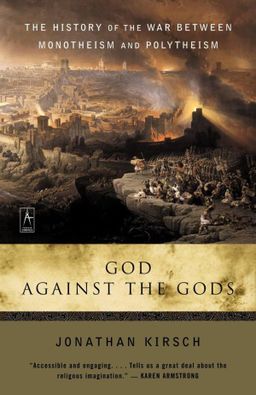Hakkında
Jonathan Kirsch is a book columnist for the Los Angeles Times and author of the bestselling and critically acclaimed King David, Moses, The Harlot by the Side of the Road, and The Woman Who Laughed at God. He lectures and consults widely on biblical, literary, and legal topics and is a past president of PEN Center USA West.
Okurlar
1 okur beğendi.
1 okur okudu.
Sözler ve Alıntılar
Constantine adopts the chi-rho , not the cross, as the emblem of the Christian god. Intriguingly, the chi-rho was not yet a Christian symbol when Constantine first uses it to decorate his labarum —it was more commonly employed by pagan scribes as an abbreviation for the Greek word chreston (“good”) in the margins of manuscripts to mark passages that they regarded as noteworthy or memorable.
“Did the Emperor’s advisers suggest this clever abbreviation for ‘Christ’ (‘Chrestos’)?” muses historian Robin Lane Fox. “Like other symbols in the years after the conversion, it had a double meaning, one for pagans, one for Christians."
Even Yahweh, regarded by the strict monotheists who wrote the Bible as the one and only god, was made over into the deity called Iao and given a place among the many gods and goddesses of paganism. The Romans who sought the blessings of the God of Israel meant only to pay their respects to yet another deity whom they had encountered among the colorful and diverse peoples they ruled. Isis of the Egyptians, the Great Mother of Syria, and Yahweh of the Jews were all regarded with both curiosity and a certain measure of awe and fear, and they wanted to make sure that they did not forfeit the blessing of the right god by making sure to worship to all gods.
“Whilst all nations and kingdoms honor their respective gods, the Romans respect the gods of all the others, just as their power and authority have reached the compass of the whole world,” boasts the pagan orator Caecilius. “They search out everywhere these foreign gods, and adopt them for their own; nay, they have even erected altars to the unknown gods.”
When a Roman citizen was accused of treason because he had dared to acquire a purple robe, a garment that only a monarch could lawfully own and wear, Julian satisfied himself that it was a matter of vanity rather than ambition. So he sent the informer back to the accused man with a gift—“a pair of purple slippers to complete the magnificence of his Imperial habit.”
Constantine was depicted in a manner that was strongly suggestive of a pagan god—the head was adorned with the radiate crown that was an attribute of Sol Invictus , the sun god, and the right hand carried the figure of Victory, one of the most cherished pagan goddesses of ancient Rome. The figure itself, in fact, was a statue of Apollo from the site of ancient Troy whose face was reworked to resemble Constantine.
İletiler
Henüz kayıt yok
